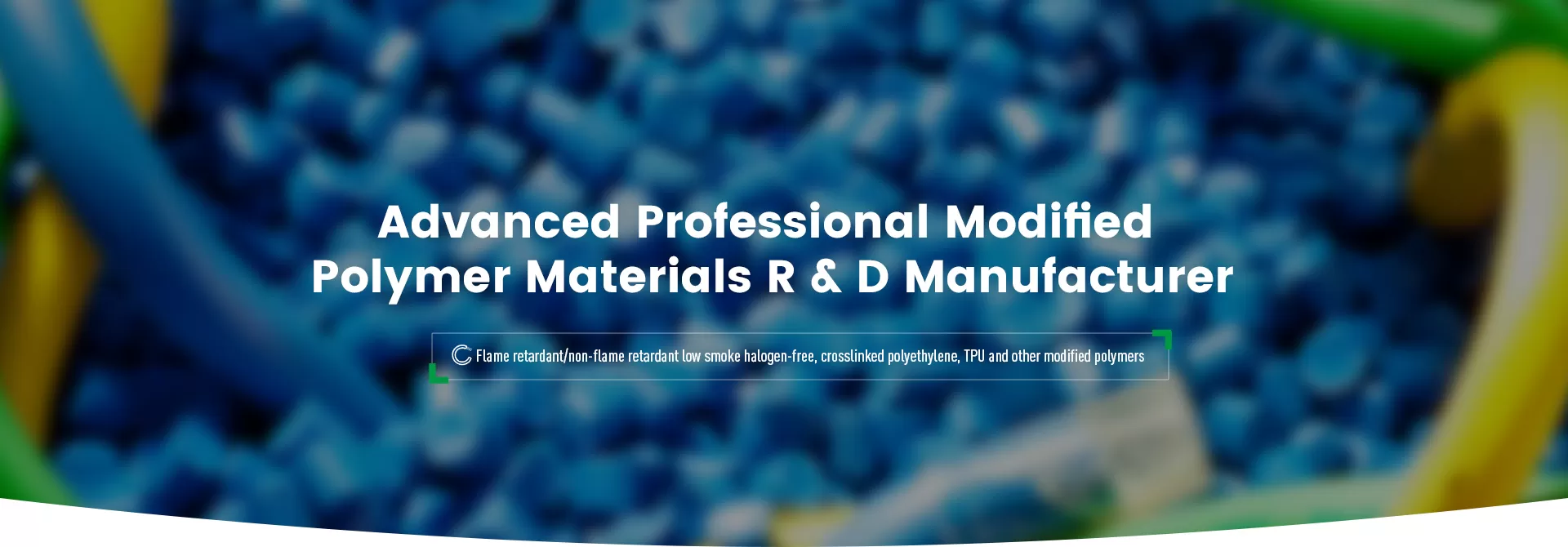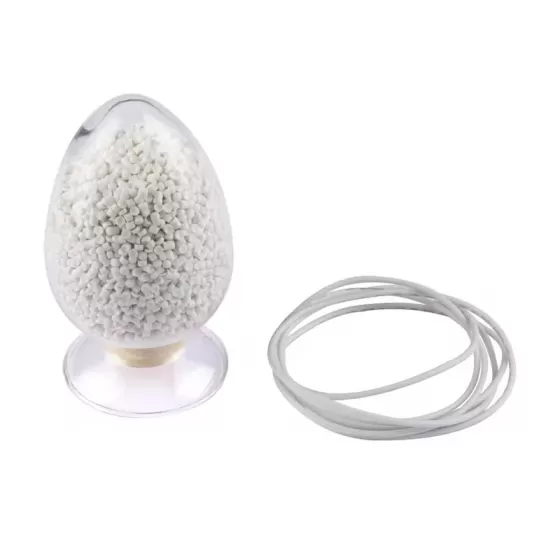

Products in this series is made of high-purity resin as the base material, and is mixed with halogen-free flame retardants, antioxidants, etc. and extruded into granules. It has excellent performance such as halogen-free, heat-resistant, and weather-resistant, has no precipitation pollution, meets the relevant requirements of Rohs, and is easy to extrude and process. It can be combined with other different types of resins (PP, PE, PS, PA, etc.), flame retardants, functional additives, etc. to repolymerize and process into new elastomer materials.
Halogen-free flame-retardant TPE is a halogen-free and environmentally friendly material with phosphorus and nitrogen as flame retardant elements. The mechanical properties meet the requirements for TPE wires in UL standards, and the flame retardancy reaches UL1581VW-1, UL94V-0, V-1, V-2 and CSAFT-2, FT-1 levels. The product meets the environmental requirements of ROHS2.0, Reach, Halogen-free, PAHS, 23P-Free, PFOS&PFOA, etc.
Combined with different types of resins and other additives, TPE can be used in the manufacture of wires and cables in the fields of consumer electronic cables, medical cables, new energy vehicles, charging pile cables, insulated wire sheaths, wire plugs, etc. This product has good production and processing, delicate appearance, and no white precipitation.
TPE Thermoplastic Elastomer Materials are widely used in the wire and cable industry due to their unique properties. TPE is a material between rubber and plastic. It has the high elasticity, high strength and high resilience of rubber, and can be processed by injection molding. These characteristics make the application of TPE in the wire and cable industry have many advantages.
In the wire and cable industry, TPE materials are often used for the outer sheath and insulation layer of cables.
Compared with traditional materials such as PVC, PE, and PUR, TPE has better flexibility and wear resistance, does not contain halogen, and does not produce toxic smoke when burned. Therefore, it is particularly suitable for applications with high requirements for environmental protection and safety performance.
These characteristics of TPE materials make it widely used in products such as data cables, headphone cables, electronic cables, power cables, and signal cables.
| NO. | Project | VALUE | Typical value | UNIT | Method |
| 1 | Hardness | 80±3 | 80 | A | GB/T 2411 |
| 2 | Specific gravity | 1.02±0.05 | 1.02 | g/cm³ | GB/T 1033 |
| 3 | Heat resistance grade | 105 | 105 | °C | —— |
| 4 | Volume resistivity at 20°C | ≥10^14 | 6.2×10^14 | Ω·mm | GB/T 2951 |
| 5 | Tensile strength before aging | ≥10 | 12.5 | Mpa | GB/T 2951 |
| 6 | Elongation before aging | ≥300 | 580 | % | GB/T 2951 |
| Performance after aging 135℃×168h | |||||
| 7.1 | Tensile strength after aging | ≥10 | 13.75 | Mpa | GB/T2951 |
| 7.2 | Tensile strength change rate | ≤±25 | 10 | % | GB/T2951 |
| 7.3 | Elongation after aging | ≥300 | 480 | % | GB/T2951 |
| 7.4 | Elongation at break change rate | ≤±25 | -17 | % | GB/T2951 |
| 8 | Tear resistance | ≥20 | 35 | N/mm | GB/T 33594 |
| 9 | Low-temperature embrittlement (16H, -40°C) | -40°C | conform | \ | GB/T 5470 |
| 10 | Weather resistance (720H, UV irradiation) | No cracks on the surface | conform | \ | GB/T 33594 |
| 10.1 | Tensile strength change rate | ≤30 | 15.2 | % | GB/T 33594 |
| 10.2 | Elongation at break change rate | ≤30 | 22.3 | % | GB/T 33594 |
| Acid And Alkali Resistance(Oxalic Acid, Sodium Hydroxide, 23°C, 168H) | |||||
| 11.1 | Change rate of tensile strength after acid resistance | ≤±30 | -20 | % | GB/T 2951 |
| 11.2 | Elongation at break after acid resistance | ≥100 | 121 | % | GB/T 2951 |
| 11.3 | Change rate of tensile strength after alkali resistance | ≤±30 | ±19 | % | GB/T 2951 |
| 11.4 | Elongation at break after alkali resistance | ≥100 | 118 | % | GB/T 2951 |
| Hydrolysis Resistance(80°C, 168H) | |||||
| 12.1 | Change rate of tensile strength after water resistance | ≤±30 | -23 | % | GB/T 2951 |
| 12.2 | Elongation at break after water resistance | ≤±30 | -22 | % | GB/T 2951 |
| 13 | Surface resistance | ≥10⁹ | 10⁹ | Ω | GB/T33594 |
| 14 | Fire retardant finished product | Single vertical burning | conform | \ | GB/T33594 |
| 15 | ROHS | The latest EU regulations | conform | \ | \ |
| 16 | REACH | The latest EU regulations | conform | \ | \ |
| 17 | HF | IEC61249-2-21:2003 limit value | conform | \ | \ |